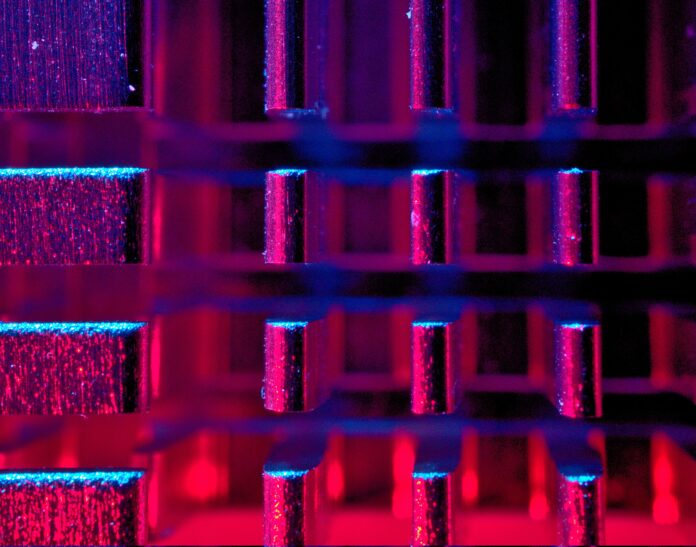Urban Air Mobility: Transforming the Future of Transportation
In recent years, the landscape of urban transportation has been undergoing a profound transformation. The rise of urbanization, coupled with increasing traffic congestion and the need for sustainable transportation solutions, has paved the way for innovative concepts to reimagine how people move within cities. One such concept that has gained significant traction is Urban Air Mobility (UAM). Urban Air Mobility refers to the visionary idea of utilizing the airspace above cities for the seamless and efficient transportation of people and goods using electric vertical takeoff and landing (eVTOL) aircraft and other aerial vehicles. This revolutionary approach to urban transportation holds the promise of alleviating traffic congestion, reducing carbon emissions, and redefining the urban experience.
At its core, Urban Air Mobility envisions a new dimension of transportation that combines the benefits of aviation and advanced technology to revolutionize how people access and navigate urban environments. Traditional ground transportation has been struggling to keep up with the rapid growth of cities, leading to traffic congestion, longer commute times, and increased stress on existing infrastructure. Urban Air Mobility aims to address these challenges by introducing a third dimension of travel – the airspace above cities. By taking advantage of this untapped dimension, UAM seeks to decongest roads and provide a more efficient and time-saving mode of transportation.
The concept of using aerial vehicles for urban transportation is not entirely new; helicopters have been in use for decades to transport individuals in and out of urban areas. However, traditional helicopters have limitations in terms of noise, emissions, and operational costs that hinder their scalability for widespread urban use. This is where eVTOL aircraft come into play. These vehicles, often resembling a hybrid between a small airplane and a helicopter, are designed to be electrically powered, significantly reducing noise and emissions compared to their traditional counterparts. Additionally, eVTOLs are being engineered with vertical takeoff and landing capabilities, meaning they can operate in confined urban spaces without the need for lengthy runways or helipads.
The implications of successful Urban Air Mobility implementation are far-reaching. One of the most anticipated benefits is the potential to drastically reduce urban congestion. As eVTOLs would primarily operate in the airspace, they bypass many of the obstacles that ground vehicles face, such as traffic lights and road congestion. This could lead to shorter and more predictable commute times, ultimately improving the quality of life for urban residents. Additionally, by transitioning to electric-powered vehicles, UAM has the potential to significantly reduce greenhouse gas emissions and contribute to cleaner air quality in cities. As these vehicles are being designed with quieter propulsion systems, noise pollution – a common concern with traditional helicopters – could also be mitigated, making urban environments more livable.
The advent of Urban Air Mobility not only presents a new mode of transportation for passengers but also opens up possibilities for the transportation of goods. The growing demand for instant deliveries, especially in urban settings, has led to an increase in the number of delivery vehicles on the road, contributing to congestion and emissions. UAM could offer an alternative solution by enabling aerial delivery of goods, reducing the need for ground-based delivery services and potentially revolutionizing the logistics industry. From medical supplies to e-commerce packages, the speed and efficiency of aerial delivery could have a transformative impact on various sectors.
However, the realization of Urban Air Mobility on a large scale is not without its challenges. Significant regulatory and infrastructural hurdles need to be overcome before eVTOLs and other aerial vehicles can become a common sight in urban skies. Air traffic management systems would need to be updated to accommodate the increased complexity of managing low-altitude urban airspace, ensuring the safe coexistence of traditional aircraft, drones, and eVTOLs. Additionally, noise regulations would need to be established to prevent potential noise disturbances caused by the operation of numerous aerial vehicles over densely populated areas.
Moreover, the infrastructure required to support Urban Air Mobility is substantial. Vertiports – the equivalent of airports for vertical takeoff and landing aircraft – would need to be strategically located throughout cities to enable convenient access for passengers. Developing and integrating these vertiports into existing urban infrastructure presents a significant logistical challenge. Furthermore, the production and maintenance of eVTOLs at a scale suitable for mass transportation require advancements in manufacturing processes and technology.
In conclusion, Urban Air Mobility stands at the forefront of a transportation revolution that has the potential to reshape urban living. By introducing the concept of utilizing the airspace for efficient passenger and goods transportation, UAM offers solutions to the pressing challenges of urban congestion, emissions, and connectivity. While there are obstacles to overcome, including regulatory frameworks and infrastructure development, the progress made in the field of Urban Air Mobility is undeniable. As technology advances and collaboration between aerospace, transportation, and regulatory sectors intensifies, the vision of soaring above the traffic-congested streets of our cities inches closer to reality. The future of urban transportation is not just terrestrial – it’s taking to the skies.
As Urban Air Mobility (UAM) continues to capture the imagination of urban planners, engineers, and innovators, its potential impact on various aspects of modern society becomes increasingly evident. Beyond the convenience of faster commutes and reduced traffic congestion, UAM holds the promise of influencing urban development, environmental sustainability, social equity, and even the way we perceive and interact with our cities.
Consider the transformation of urban landscapes. As cities adapt to accommodate UAM infrastructure, the traditional urban skyline could experience a notable change. Vertiports and aerial pathways may become as ubiquitous as train stations and highways, reshaping the visual identity of cities. These futuristic additions could inspire architects and urban designers to think vertically, leading to the creation of innovative skyscrapers and interconnected aerial hubs that redefine urban architecture.
Furthermore, the integration of UAM could drive urban development and rejuvenation efforts in previously overlooked areas. Historically, transportation networks have played a pivotal role in shaping urban expansion. With the introduction of new transportation modes like eVTOLs, underdeveloped regions could experience revitalization as accessibility improves. This shift could alleviate pressures on central urban areas, promoting more balanced growth and reducing the phenomenon of urban sprawl.
Sustainability, a critical concern in today’s world, stands to benefit from the adoption of UAM. Electric-powered eVTOLs offer a cleaner alternative to traditional internal combustion engine vehicles, contributing to reduced air pollution and greenhouse gas emissions. As UAM gains momentum, the demand for more efficient and sustainable energy sources could accelerate the development of advanced battery technologies and renewable energy solutions, benefiting both urban air transportation and other sectors.
Intriguingly, UAM might influence our perception of time and distance. The ability to traverse urban areas swiftly through the air could lead to a redefinition of proximity. Places that once seemed distant due to traffic congestion could suddenly become accessible, altering our perception of distance and expanding our choices for work, leisure, and residence. This shift could influence real estate dynamics, as areas previously considered remote could gain popularity and become attractive for living or investment.
Social equity is another facet of urban life that UAM could impact. As transportation options diversify, disparities in access to opportunities might narrow. Currently marginalized communities with limited access to efficient transportation could benefit from UAM’s accessibility and connectivity, potentially opening up new avenues for education, employment, and social engagement. However, careful planning and consideration would be necessary to ensure that the benefits of UAM reach all segments of society.
Cultural and recreational aspects of urban living could also experience shifts due to UAM. Aerial sightseeing and tours could provide unique perspectives of cities, fostering a new form of tourism and appreciation for urban beauty. Imagine taking a serene evening flight above a brilliantly lit cityscape, offering an experience unlike any other. Similarly, cultural events and festivals could take on new dimensions, utilizing the aerial spaces for artistic displays, light shows, and interactive performances.
Safety and emergency services could be revolutionized by UAM as well. Rapid response teams could utilize eVTOLs to navigate through urban environments quickly, bypassing traffic congestion to reach critical situations in record time. Medical transport could also benefit from UAM, enabling swift transportation of patients to specialized facilities, especially in areas with limited medical infrastructure.
As UAM progresses, it could lead to the emergence of new industries and job opportunities. The development, manufacturing, operation, and maintenance of eVTOLs and UAM infrastructure would require a highly skilled workforce. Moreover, data management and air traffic control for urban airspace would call for expertise in areas such as artificial intelligence, sensor networks, and communication systems.
In conclusion, Urban Air Mobility extends its influence beyond the realm of transportation. Its potential ramifications touch upon urban design, sustainability, social equity, cultural experiences, and even our perception of time and space. The integration of UAM into urban environments represents not only a technological advancement but a paradigm shift in how we envision and interact with our cities. While challenges remain in terms of regulations, infrastructure, and societal acceptance, the unfolding story of UAM is one that has the potential to reshape urban living for generations to come.
The concept of Urban Air Mobility (UAM) has ignited a spark of imagination that transcends the boundaries of traditional transportation. It fosters a reimagining of the urban fabric, a seamless fusion of human aspiration and technological innovation. In this narrative of urban transformation, UAM becomes not just a mode of movement but a catalyst for reshaping the very essence of modern cities.
The integration of UAM into urban ecosystems has the potential to redefine the dynamics of how people engage with their surroundings. As aerial corridors weave through the urban expanse, a new perspective emerges – a vista previously reserved for the domain of birds and aviators. This shift in perspective offers a unique opportunity to reconnect with the urban landscape in an unprecedented way. Rooftops, once overlooked, could transform into elevated platforms of departure and arrival, infusing urban life with a sense of dynamism and exploration.
The anticipation of UAM introduces a subtle but transformative shift in the urban soundscape. The rhythmic hum of eVTOLs, their electric propulsion systems engineered for reduced noise, could become an integral part of the auditory tapestry. The symphony of cities, once dominated by the cacophony of traffic, may find itself accompanied by the mellifluous undertones of airborne vehicles, giving rise to a new urban harmony.
As urban airspace gains significance, a new dimension of human connectivity comes to the forefront. While UAM promises faster and more efficient commutes, it also creates the potential for spontaneous interactions and connections. The shared experience of soaring above the cityscape, a realm once reserved for dreams and aspirations, could foster a sense of collective identity and shared destiny among urban dwellers. Strangers bound by their common journey through the sky could forge fleeting yet meaningful connections.
The emergence of UAM raises intriguing questions about the role of public spaces in the sky. With aerial mobility as an integral part of urban life, the concept of ‘sky parks’ or ‘aero-gardens’ might evolve. These suspended green spaces could serve as tranquil oases amidst the bustling aerial highways, providing residents with a sanctuary to unwind and immerse themselves in nature. The juxtaposition of concrete and verdure in the urban aerial realm could evoke a sense of harmony and balance.
In the realm of urban commerce, the advent of UAM could herald a renaissance of street markets. Traditional markets, known for their vibrancy and cultural significance, might find new life in the sky. Aerial marketplaces, suspended between buildings or clustered around vertiports, could become hubs of exchange, where artisans, traders, and communities converge to celebrate their heritage and creativity. This convergence of commerce and aerial mobility could redefine the narrative of economic interaction.
The integration of UAM introduces a dimension of fluidity to urban planning and architecture. Conventional urban design often adheres to fixed pathways and linear progression. However, UAM’s non-linear nature challenges this paradigm, inspiring urban planners to think in terms of three-dimensional networks. The result could be a city that evolves organically, adapting to the ebb and flow of aerial traffic, and embracing the dynamic spirit of UAM.
UAM’s impact transcends the purely physical realm; it has the potential to influence the collective psyche of urban inhabitants. The knowledge that the skies above are no longer an inaccessible void, but a canvas for personal exploration and shared journeys, can infuse urban life with a renewed sense of wonder and possibility. This awareness could encourage a more harmonious relationship between humanity and the environment, fostering a deeper understanding of the delicate balance between progress and preservation.
As the narrative of UAM unfolds, it weaves a tale of innovation and evolution, a story that extends beyond technology to encompass culture, art, sociology, and human experience. It is a narrative of urban resilience and adaptability, of cities that embrace change and embrace the boundless potential of the skies. While challenges undoubtedly lie ahead – from regulatory frameworks to social acceptance – the essence of UAM’s story lies in its ability to awaken the collective imagination and inspire the urban dreamers of today and tomorrow.














